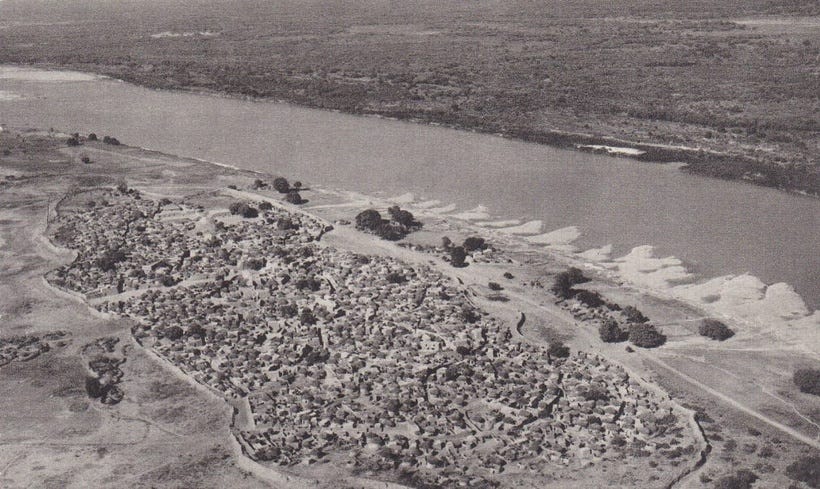Early civilizations of ancient Africa and the pre-Aksumite civilization of the northern Horn.
In the closing decades of the 20th century, archaeologists working to uncover the foundations of urbanism and complex societies in West Africa discovered a vast cluster of stone ruins in southern Mauritania.
Among these ruins was an urban settlement more than 80 ha large, with an elite necropolis at its centre surrounded by over 540 stone-walled compounds and hundreds of funerary tumuli. The intricate layout of the settlement of Dakhlet el Atrouss I, its monumental tombs, and its estimated population of about 10,000 indicate that it was the capital of the Dhar Tichitt neolithic culture during its 'classic phase' between 1600BC-1000BC, and is arguably West Africa’s first town.
funerary monument at the center of Dakhlet el Atrouss 1, 2nd millennium BC.
the Akreijit Regional Center in the Dhar Tichitt ruins, 2nd millennium BC.
Ruins of Wadan north of Tichitt, one of the south-western Saharan towns established by the Azer in the early 2nd millennium CE.
Studies of African civilizations outside the Nile valley often start in the centuries after the common era, creating a false impression that social complexity in Africa only began during the Middle Ages. However, archeological investigations into the foundations of many of these medieval African societies have shown that they represent a culmination of centuries of cultural developments that extend back to antiquity.
The Lake Chad basin, for example, has been at the center of many of Africa's largest pre-colonial states since the Middle Ages including the empire of Kanem-Bornu, and the Kotoko city-states, which established large cities and towns protected by an extensive system of walls and ditches several meters tall and deep.
While the construction of these walled towns was initially thought to have been influenced by exogenous factors, the discovery of over a dozen ancient walled towns along the western shores of Lake Chad dating back to the early 1st millennium BC has shown that this form of urbanism was an autochthonous invention.
Magnetogram showing the outlines of some sub-surface features as well as the location of an old ditch segment at Zilum, Nigeria, 1st millennium BC.
Aerial photo of Gulfey, a fortified Kotoko town near Lake Chad established in the mid-2nd millennium CE.
Another example is the celebrated art traditions of Igbo-Ukwu, Ife, Benin, and other societies in southwestern Nigeria, which are known to have begun in the 9th century of the common era, seemingly without precedent.
However, studies of the Nok neolithic culture (ca. 1500-1BC), whose sculptural artworks featured similar motifs, carving styles, and expressions of belief systems, reveal the existence of an ancient precursor that links many of the region's art traditions, albeit indirectly.
Equestrian Nok terracotta figure, 1st millennium BC, private collection. Equestrian Igbo-Ukwu figure on a bronze hilt, 9th century CE, NCMM, Equestrian Ife figure on a copper-alloy scepter, 12th-13th century CE, Musée Barbier-Mueller. Equestrian copper-alloy figure from Benin city, 16th-17th century CE, British Museum.
Ancient Africa therefore contained several complex societies whose cultural developments laid the foundations for the emergence of the better-known kingdoms of empires during the Middle Ages.
This gradual development is best exemplified in the northern Horn of Africa.
Centuries before the Aksumite empire became one of "the four great kingdoms of the world", several complex societies emerged in the region between modern Eritrea and Ethiopia's Tigray state. Referred to as the 'Pre-Aksumite' or 'Ona culture' sites, these settlements of agro-pastoral communities constructed monumental stone temples and palaces, established towns, and cultivated links with south-Arabia and the Nubian Nile valley.
The history of the Pre-Aksumite civilization is the subject of my latest Patreon article, please subscribe to read about it here;
pre-Aksumite temple at Yeha, Ethiopia.









